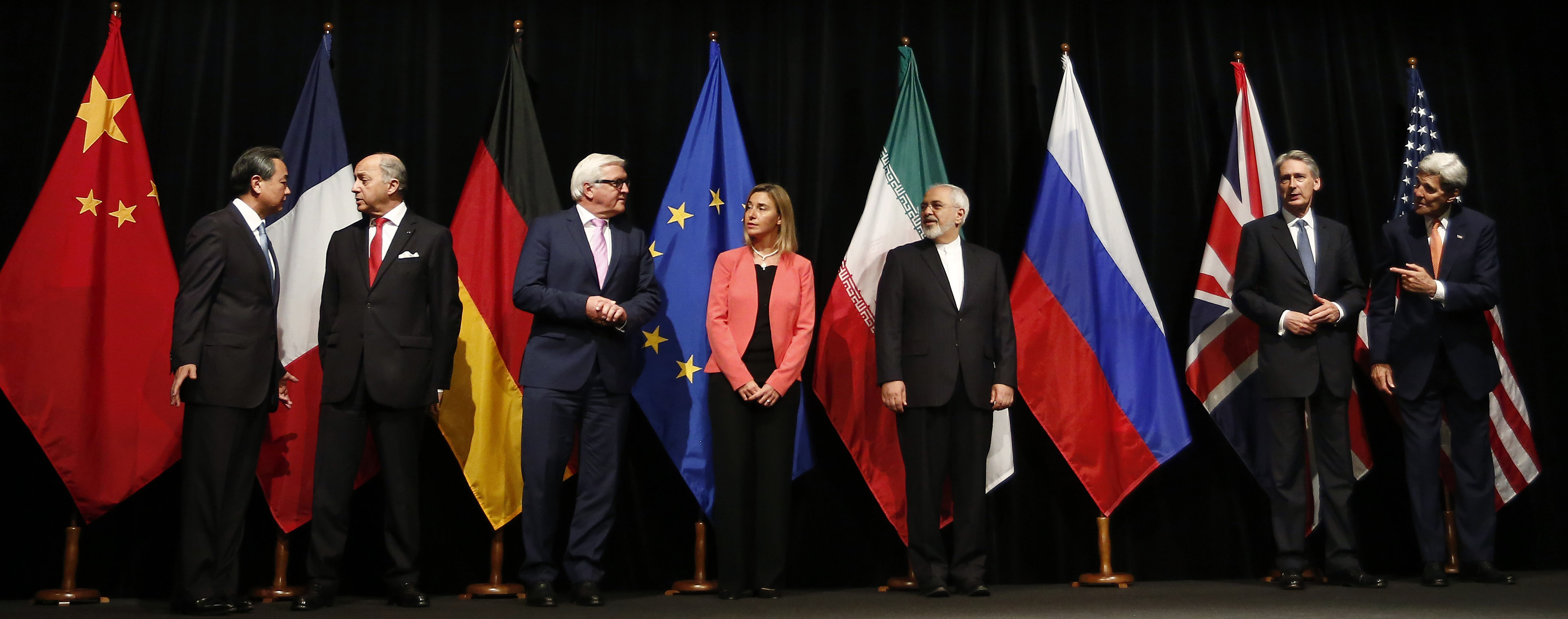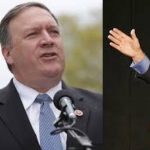Scientists Tell Trump to Stick to the Iran Deal
Yesterday, 37 of some of the nation’s top scientists sent a letter to Trump urging him to stick to the commitments made by the U.S. under the Joint Comprehensive Plan of Action (JCPOA), more commonly known as the Iran Nuclear Agreement. The letter was spearheaded by Richard Garwin, one of the designers of the first hydrogen bomb. Some of the other signatories include Rush Holt, director of the largest general society of scientists in the world (AAAS), Phillip Anderson, Nobel laureate and professor emeritus at Princeton, and Martin Hellman, professor emeritus at Stanford, author of the blog Defusing the Nuclear Threat, and longtime Peace Action member.
After reviewing the ways and means by which the agreement has verifiably prevented Iran from pursuing nuclear weapons without the international community being alerted, they conclude: “Our technical judgment is that the multilateral JCPOA provides a strong bulwark against an Iranian nuclear-weapons program. We urge you to preserve this critical U.S. strategic asset.”
Given that some members of Congress are reportedly working on legislation that could be released in a matter of weeks to increase taxes and levy penalties on companies doing business with Iran, legislation that could undermine if not unravel the nuclear agreement, the letter serves as a critical and timely reminder for Congress of the importance of protecting what the scientists call a “critical U.S. strategic asset.”
The full text of the letter is below:
2 January 2017
Dear President-Elect Trump;
On August 9, 2015 a group of scientists and engineers with understanding of the physics and technology of nuclear power and of nuclear weapons sent an open letter to President Obama about the Iran Deal, formally known as the Joint Comprehensive Plan of Action (JCPOA). We characterized the JCPOA as “an innovative agreement, with much more stringent constraints than any previously negotiated nonproliferation framework.”
Eleven months after “implementation day” we write to provide our assessment of the current status of the JCPOA. As agreed, Iran has deactivated and put into storage under International Atomic Energy Agency (IAEA) seal about 2/3 of its centrifuges, and it has exported more than 95% of its stockpile of low-enriched uranium—a springboard to weapon-usable highly enriched uranium. Iran no longer produces uranium with enrichment near 20%, as it did before the interim Joint Plan of Action (JPOA), but is restricted to 3.67% enrichment. As a result of the reduced centrifuge capacity and the elimination of the large stock of partially enriched uranium, the breakout time for Iran to produce enough highly enriched uranium for a nuclear weapon has increased to many months, from just a few weeks during the time that the JPOA was under negotiation. IAEA inspectors now have the right to daily access at Iran’s enrichment plant at Natanz, and monitoring devices there make continuous on-line enrichment measurements. We are confident that no surprise breakout at this facility is possible.
The large “calandria” or reactor vessel for Iran’s heavy-water reactor has been rendered inoperable, and Iran’s stockpile of heavy water has been reduced to 130 metric tons and capped at that level. The overage of 0.1 tons recently reported by the IAEA, of no strategic significance, was remedied by export of 11 tons as verified by the IAEA. The redesign of the reactor will ensure that its plutonium production will be about 10% of that from the original design, and, when construction is complete and the reactor has begun operation, the fuel that has generated plutonium will be removed from Iran. These steps eliminate the means for Iran to produce plutonium, the alternative material for nuclear weapons.
Furthermore, Iran has agreed to an enhanced version of the procedures of the “Additional Protocol” to the Nuclear Non-Proliferation Treaty, which gives IAEA inspectors access to, inter alia, centrifuge manufacturing, R&D and storage sites, and uranium mines, as well as any suspect potential clandestine uranium enrichment facilities.
In sum, the JCPOA has dramatically reduced the risk that Iran could suddenly produce significant quantities of nuclear-weapon materials. This has lowered the pressure felt by Iran’s neighbors to develop their own nuclear weapons options and none has announced a new dual-use nuclear program of its own.
In the near term it will be necessary to maintain vigilance using the verification procedures in place. As we noted in our previous letter, if Iran decides to increase its enrichment capacity as allowed by the JCPOA after about ten years, enhanced verification measures would be desirable and consistent with Iran’s commitment in the JCPOA to implement certified modern verification procedures in line with internationally accepted IAEA practice. Multinational participation in what is currently a purely national program for producing power reactor fuel may also be a desirable means to enhance transparency.
The JCPOA does not take any options off the table for you or any future president. Indeed it makes it much easier for you to know if and when Iran heads for a bomb. It provides both time and legitimacy for an effective response.
Our technical judgment is that the multilateral JCPOA provides a strong bulwark against an Iranian nuclear-weapons program. We urge you to preserve this critical U.S. strategic asset.
Sincerely,
Richard L. Garwin, IBM Fellow Emeritus
Robert J. Goldston, Princeton University
Siegfried S. Hecker, Stanford University
Martin Hellman, Stanford University
Rush D. Holt, American Association for the Advancement of Science
Scott Kemp, Massachusetts Institute of Technology
Frank von Hippel, Princeton University
Also signed by:
John F. Ahearne, Member, National Academy of Engineering
Philip W. Anderson, Professor Emeritus, Princeton University
Lewis M. Branscomb, Professor Emeritus, University of California at San Diego
Christopher Chyba, Princeton University
Leon N. Cooper, Brown University
Pierce S. Corden, Former Director, Office of International Security Negotiations, Bureau of Arms Control, Department of State
John M. Cornwall, Professor of Physics and Astronomy, UCLA
Philip E. Coyle, Former Associate Director for National Security and International Affairs, White House Office of Science and Technology Policy
Sidney D. Drell, Stanford University
Freeman Dyson, Professor Emeritus, Institute for Advanced Study, Princeton
Harold A. Feiveson, Program on Science and Global Security, Princeton University
Charles D. Ferguson, Federation of American Scientists
Michael E. Fisher, Emeritus, Cornell University and the University of Maryland
Jerome I. Friedman, Nobel Prize in physics 1990
Victor Gilinsky, Former Member of the Nuclear Regulatory Commission
Howard Georgi, Mallinckrodt Professor of Physics, Harvard University
Sheldon L. Glashow, Higgins Professor of Physics Emeritus, Harvard University
Arthur Metcalf Professor of Science and Mathematics, Boston University
Lisbeth Gronlund, Union of Concerned Scientists
David Gross, Kavli Institute for Theoretical Physics, UCSB
Gregory Loew, Emeritus Stanford/SLAC Professor
Allison M Macfarlane, George Washington University
Richard A. Meserve, President Emeritus, Carnegie Institution for Science
Marvin Miller, Massachusetts Institute of Technology
Kumar N. Patel, Professor Emeritus, Dept of Physics and Astronomy, UCLA
John Parmentola, Former Senior VP General Atomics and Former Director for Research And Laboratory Management U.S. Army
Malvin A. Ruderman, Columbia University Burton Richter, Stanford University
Myriam Sarachik, City College of New York, CUNY
Roy F. Schwitters, The University of Texas at Austin
David Wright, Union of Concerned Scientists
(Affiliations for identification only)







Full support !!
De: “PEACE ACTION’S GROUNDSWELL” À: “Marie-Noel Lombard” Envoyé: Mardi 3 Janvier 2017 21:29:35 Objet: [New post] Scientists Tell Trump to Stick to the Iran Deal
WordPress.com Gabe Murphy posted: ” Yesterday, 37 of some of the nation’s top scientists sent a letter to Trump urging him to stick to the commitments made by the U.S. under the Joint Comprehensive Plan of Action (JCPOA), more commonly known as the Iran Nuclear Agreement. The letter was”